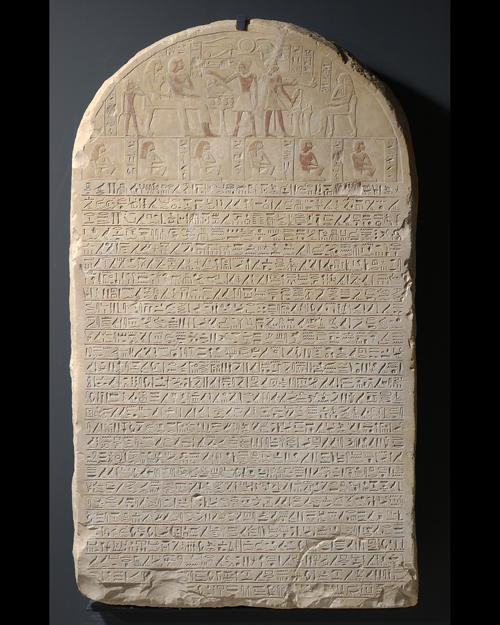
© 2004 Musée du Louvre / Christian Décamps
New Kingdom, 18th dynasty,
1550–1295 BC
Limestone
H.: 1.06 m; W.: 62 cm
Department of Egyptian Antiquities, Musée du Louvre
(C 286)
Executed in a style specific to the early 18th dynasty, this tall curved stele adopts a composition not dissimilar from the family stelae of the Middle Kingdom. In the upper curve, below a double offering scene addressed (on the left) to the chief of Amun’s flocks, Imenmes, plus his wife and one of his sons, and (on the right) to a certain Baket, we find the couple’s six other children kneeling in “boxes.”
The main part of the stele is engraved with a long text of twenty-eight lines, which begins with a hymn to the god Osiris. The myth of Osiris was one of the most famous in the Egyptian religion. And while there were countless allusions to the god of the dead and to his sovereignty over eternity, few pharaonic sources actually recounted his entire legend until Greek authors came along with their compilations. In more ancient periods, the god’s ubiquitous presence in funerary iconography tended to overshadow the first part of the myth, when Osiris, even before governing the underworld, reigned on earth as the heir of Geb and Nut. Imenmes’s steles therefore provides rare testimony of Osiris’s earthly kingship prior to his murder.